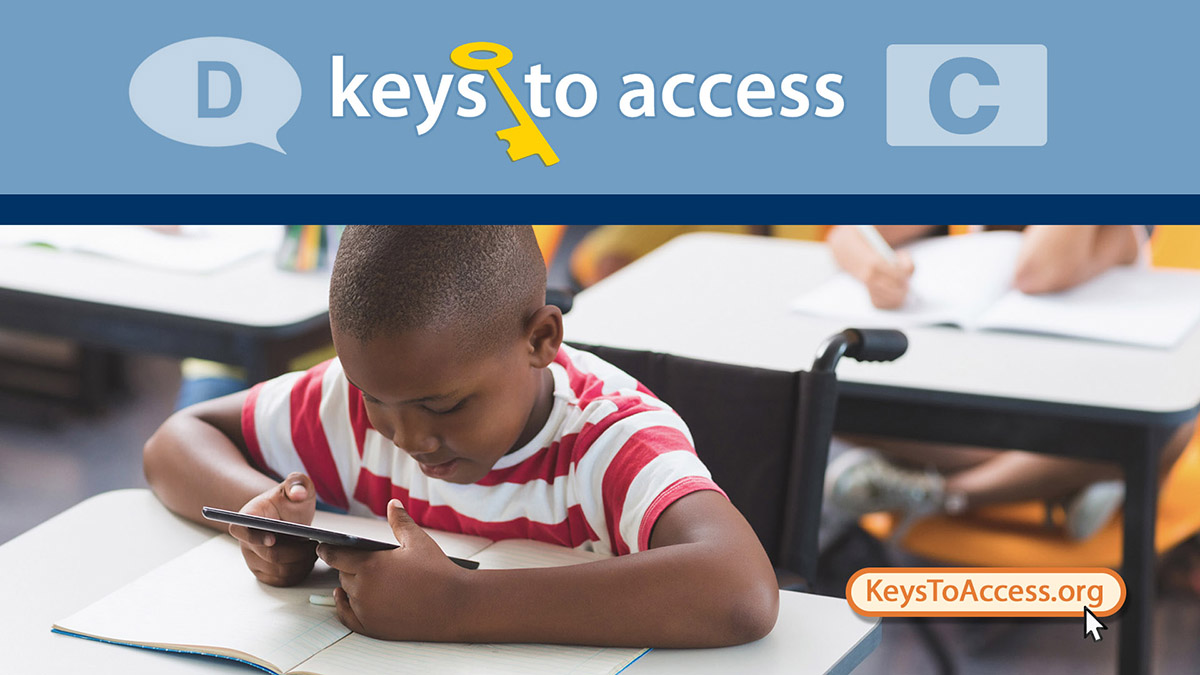<< Learning Center
Media Accessibility Information, Guidelines and Research

A Message From DCMP's CEO
The Keys to Access guidelines for captioning and description were developed by the Described and Captioned Media Program (DCMP) to ensure that the accessibility features of its media were of the high quality required to provide equal access. These guidelines are based on recorded research findings, the input and guidance of consumers and experts in the field of accessible media, and decades of experience by DCMP staff.
Millions of Americans need equal access. For example, the National Institute on Deafness and Other Communication Disorders reports that there are over 37,000,000 Americans who are deaf or hard of hearing. The American Foundation for the Blind reports that there are over 25,000,000 Americans who experience significant vision loss, and the Gallaudet University Library reports there are approximately 45,000 to 50,000 individuals in the U.S. who are deaf-blind.

The government has recognized that this equality is a right. The Individuals With Disabilities Education Act (IDEA), which funds the DCMP, stipulates that students with disabilities are entitled to access, participation, and progress within the general education curriculum. Several other laws, both state and federal, mandate that people with disabilities have access to evolving high-speed broadband, wireless and other Internet protocol (IP) technologies, television, movies, educational multimedia, and other communications. Two examples which guarantee equal opportunity for all are The Americans With Disabilities Act (ADA) and The 21st Century Communications and Video Accessibilities Act.
Whether mandated by law or voluntarily provided, captioning and description are good for most everyone. Such benefits are not the first time that unusual things happen when products are designed to be accessible by people with disabilities. For example, it wasn't long after sidewalks were redesigned to accommodate wheelchair users that the benefits of curb cuts began to be realized by people with strollers, riding on skateboards, using roller-blades, riding bicycles and pushing shopping carts. Similarly, captioning and description are literacy tools to benefit millions of others, and this cause is championed by the DCMP through its Read Captions Across America and Listening Is Learning campaigns.
Join with us in our universal access quest. It's the law, and everyone benefits!
Jason Stark, CEO
Described and Captioned Media Program
The Captioning Key
Captioning is the key to opening up a world of information for persons with hearing loss or literacy needs.
Captioning is the process of converting the audio content of a television broadcast, webcast, film, video, CD-ROM, DVD, live event, or other production into text and displaying the text on a screen or monitor. Captions not only display words as the textual equivalent of spoken dialogue or narration, but they also include speaker identification, sound effects, and music description. Captioning is critical for students who are deaf or hard of hearing, but it also aids the reading and literacy skills development of many others.
The Captioning Key guidelines have been a reference for captioning of both entertainment and educational media targeted to consumers at all levels (children through adults). The manual has received international distribution and has been translated into other languages.
These guidelines are a key for vendors performing captioning for the DCMP. But the information is applicable to all others that provide captioning of all types of media at various levels. Thus, these guidelines will also be useful to media producers/distributors and others who are considering captioning their products or learning about captioning.
Click here to visit The Captioning Key.
The Description Key
Description is the key to opening a world of information for persons with a vision loss, literacy needs, or loss of cognitive abilities.
Description is the verbal depiction of key visual elements in media and live productions. Also known as "audio description" or "video description," the description of media involves the interspersion of these depictions with the program's original audio.
The vocabulary and language structure used in the description of educational media should be consistent with that used in the program being described. It is also important to make a distinction between media that is produced for educational purposes and that which is produced purely for entertainment—the "key visual elements" of an educational program should be those that serve in conveying a specific learning goal.
Click here to visit The Description Key.
Related Resources
DCMP’s Equal Access in the Classroom

